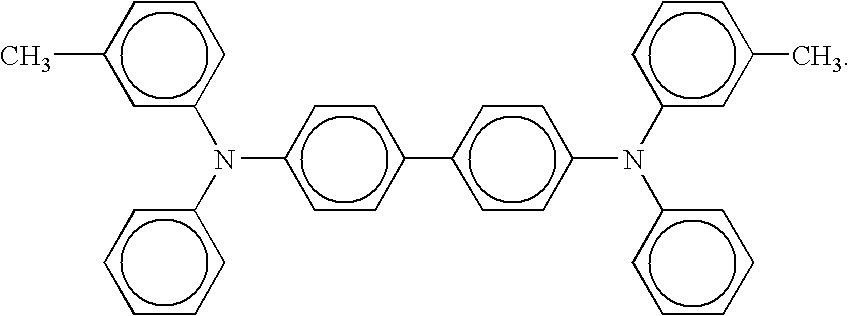Charge transport layer processing
a charge transport layer and charge transport technology, applied in the direction of electrographic process, corona discharge, instruments, etc., can solve the problems of limiting the life of the photoreceptor, reducing the sensitivity of the imaging device, and the wear rate of the conventional charge transport layer, so as to improve the durability of the imaging member, improve the electrical performance, and reduce the wear rate of the imaging member
- Summary
- Abstract
- Description
- Claims
- Application Information
AI Technical Summary
Benefits of technology
Problems solved by technology
Method used
Image
Examples
example
[0083] A CTL dispersion was prepared following the method set forth in Scheme 1 below. The results for the PTFE slurry were: initial stage: 644±14 nm; and one week: 630±13 nm, which indicate that the dispersion was very stable. The stability of the PTFE slurry was monitored by measuring its particle size distribution.
[0084] The PTFE particles were dispersed in THF in the presence of the sufactant GF-300 at about 2.0% by weight of total PTFE. The particle size distribution of the PTFE slurry (380 nm (92%), 1534 nm (8%)) was stable for up several months.
[0085] In contrast, the slurry prepared in a conventional mixed solvent system (THF:TOL=70:30) was not stable and its particle size continued to grow as measured by particle size measurement.
PUM
| Property | Measurement | Unit |
|---|---|---|
| Size | aaaaa | aaaaa |
| Electric charge | aaaaa | aaaaa |
| Transport properties | aaaaa | aaaaa |
Abstract
Description
Claims
Application Information
 Login to View More
Login to View More - R&D
- Intellectual Property
- Life Sciences
- Materials
- Tech Scout
- Unparalleled Data Quality
- Higher Quality Content
- 60% Fewer Hallucinations
Browse by: Latest US Patents, China's latest patents, Technical Efficacy Thesaurus, Application Domain, Technology Topic, Popular Technical Reports.
© 2025 PatSnap. All rights reserved.Legal|Privacy policy|Modern Slavery Act Transparency Statement|Sitemap|About US| Contact US: help@patsnap.com



